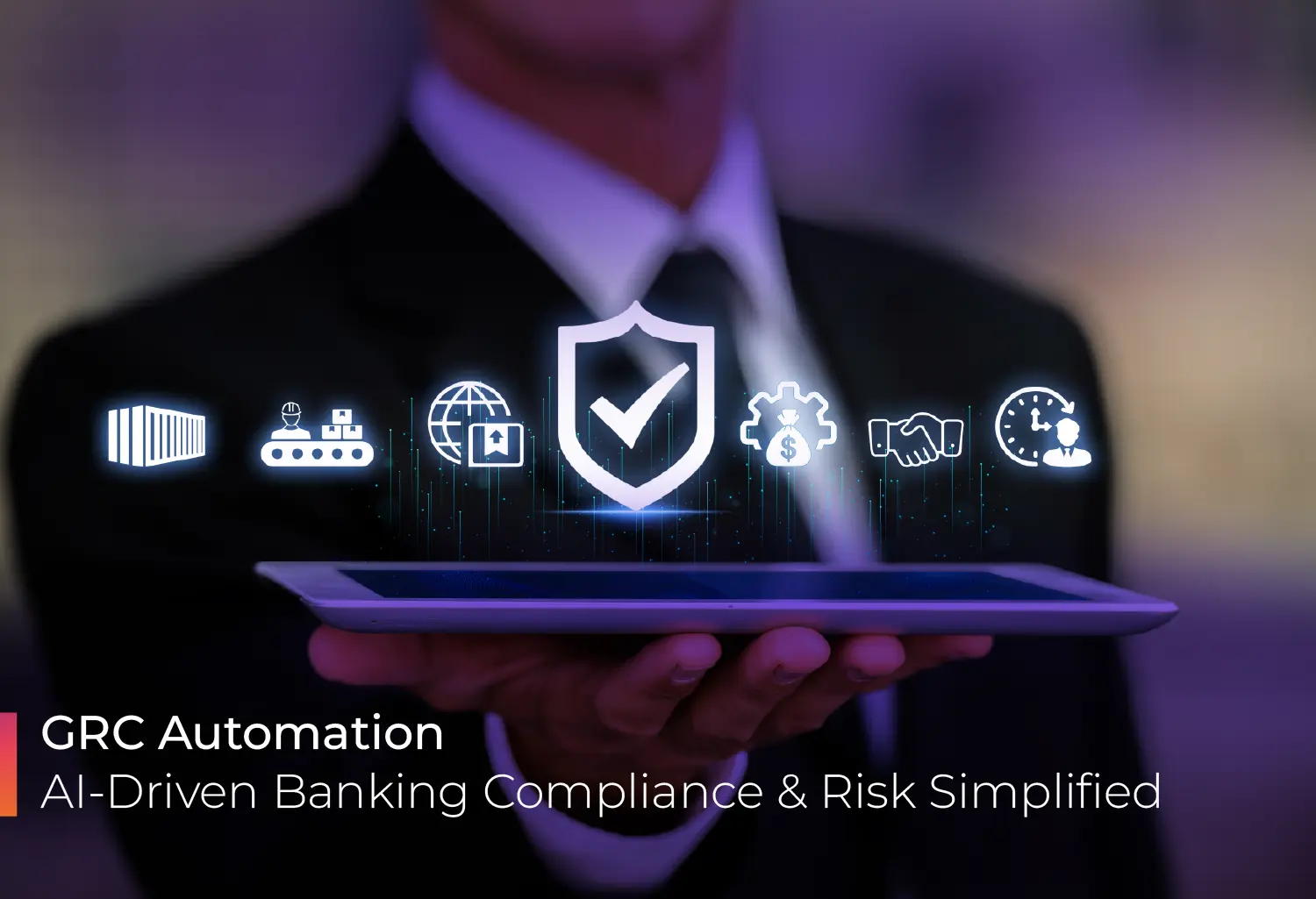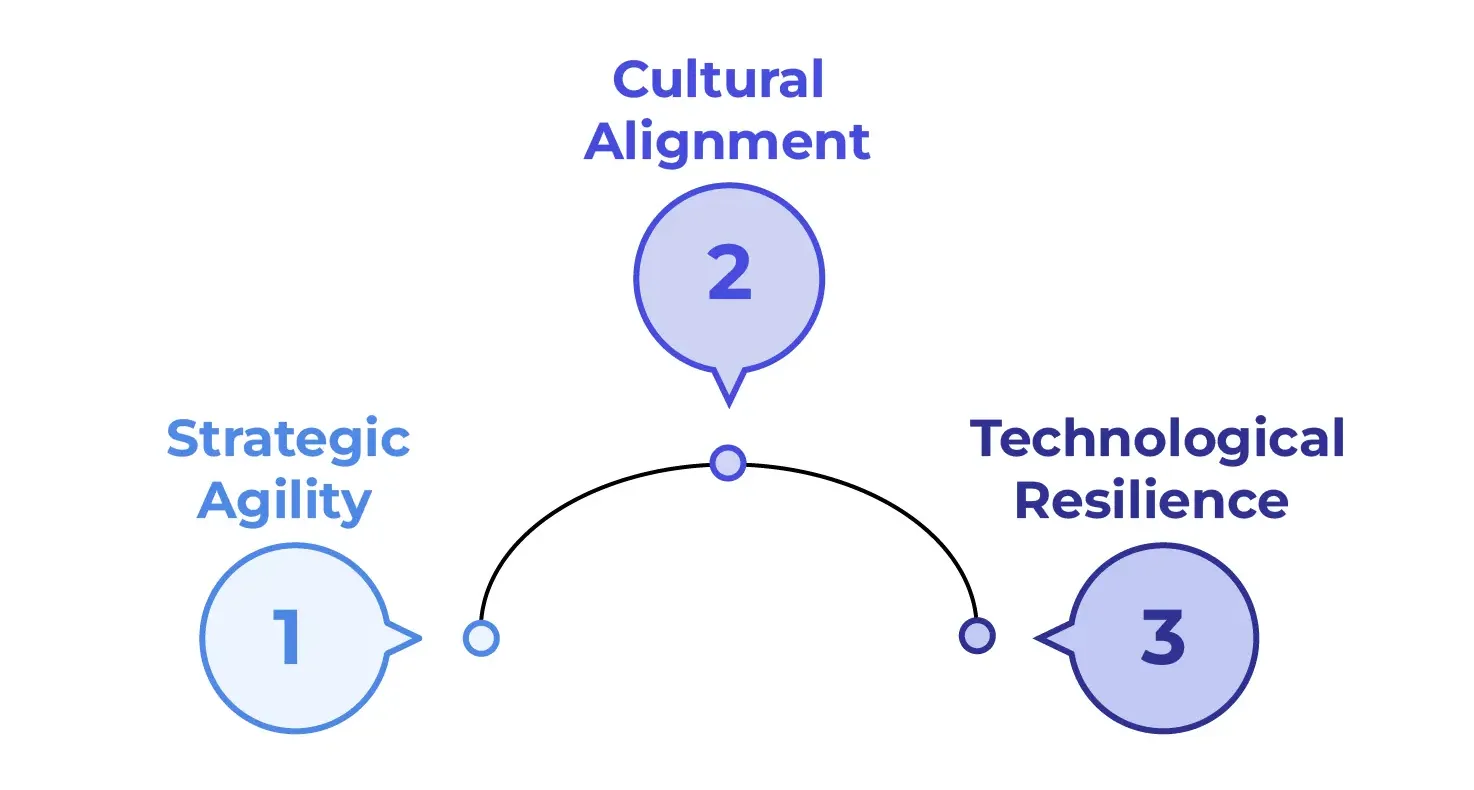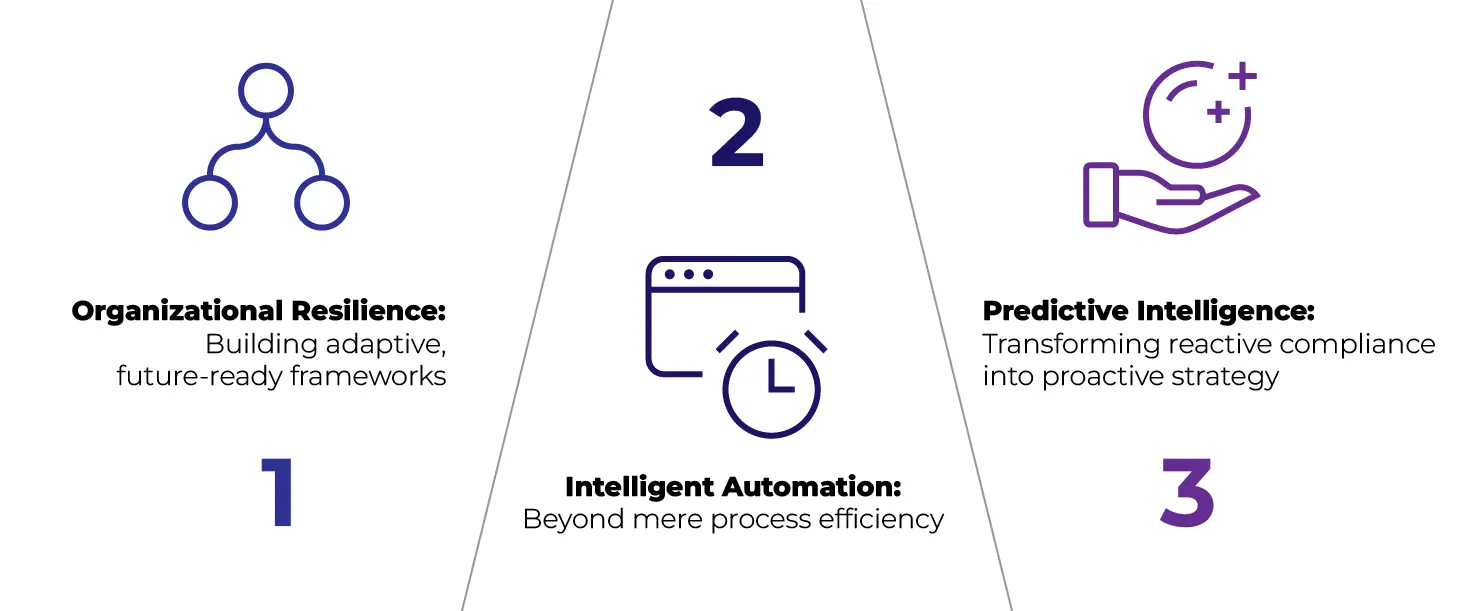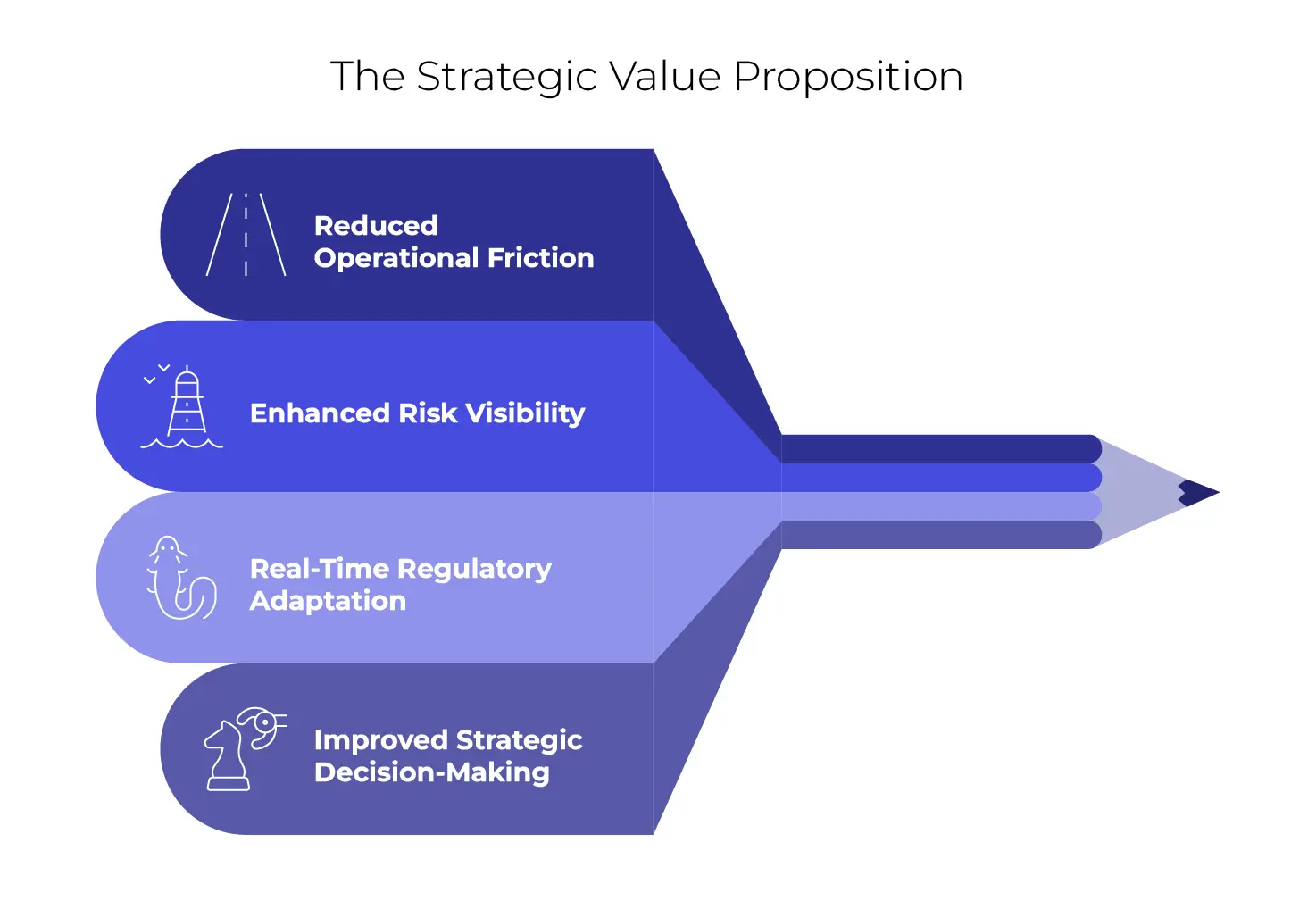GRC Automation Redefining Banking’s Strategic Landscape
Financial institutions are now confronted with a fundamental choice: remain tethered to outdated, reactive models or embrace a proactive, technology-driven approach that transforms GRC from a cost center to a strategic competitive advantage. In the volatile landscape of modern banking, we stand at a critical technological and strategic [...] The post GRC Automation Redefining Banking’s Strategic Landscape appeared first on AutomationEdge.

Financial institutions are now confronted with a fundamental choice: remain tethered to outdated, reactive models or embrace a proactive, technology-driven approach that transforms GRC from a cost center to a strategic competitive advantage. In the volatile landscape of modern banking, we stand at a critical technological and strategic crossroads. The financial industry is hemorrhaging resources at an alarming rate:
- Compliance costs for banks have skyrocketed to $270 billion annually
- Financial institutions incurred $10.4 billion in regulatory fines in 2022 alone
The convergence of unprecedented regulatory complexity, rapid digital transformation, and escalating global economic uncertainties has created a perfect storm that demands a radical reimagining of governance, risk, and compliance (GRC). In the RegTech Universe, global spending on compliance and regulatory is $270 billion while 10 – 15% of workforce is dedicated to Regulatory Compliances. This isn’t merely a technological upgrade—it represents a profound philosophical shift in how organizations perceive risk, governance, and organizational resilience.
The Paradigm Shift: From Compliance to Strategic Advantage
What was once viewed as a mere regulatory necessity has now emerged as a powerful strategic lever. GRC automation is no longer about avoiding risks—it’s about creating competitive differentiation. Today’s banking leaders are confronting a fundamental question: Will we be passive recipients of regulatory changes, or proactive architects of our organizational destiny?
Reimagining Risk: Beyond Traditional Boundaries
The modern banking landscape demands a holistic view of risk. No longer can we compartmentalize compliance as a back-office function. It must be integrated into the very DNA of organizational strategy.
Three Strategic Dimensions of GRC Transformation

-
Technological Resilience
Technological resilience goes beyond implementing software solutions. It’s about creating an intelligent, adaptive ecosystem that can anticipate and respond to emerging risks in real-time. This dimension involves:
- Advanced machine learning algorithms that can predict potential compliance breaches
- Dynamic risk assessment frameworks that evolve with changing regulatory landscapes
- Integration of AI-driven analytics to provide holistic, predictive insights
- Blockchain and distributed ledger technologies for transparent, immutable compliance tracking
-
Cultural Alignment
Cultural transformation is the most challenging yet critical dimension. It requires:
- Embedding risk awareness as a core organizational value
- Developing a proactive compliance mindset across all hierarchical levels
- Creating incentive structures that reward risk-intelligent behavior
- Continuous learning and development programs focused on emerging GRC technologies
- Building psychological safety that encourages open dialogue about potential risks
-
Strategic Agility
Strategic agility transforms GRC from a defensive mechanism to a strategic enabler:
- Developing flexible governance frameworks that can rapidly adapt to regulatory changes
- Creating cross-functional teams with multidisciplinary risk management capabilities
- Implementing real-time reporting and decision-making mechanisms
- Leveraging data analytics for strategic insights and predictive modeling
The Human Element in Automated Governance
Contrary to popular belief, GRC automation isn’t about replacing human judgment—it’s about amplifying human potential. By automating routine compliance tasks, we liberate our most valuable resource: human creativity and strategic thinking.
- Intelligent Automation: Beyond mere process efficiency
- Predictive Intelligence: Transforming reactive compliance into proactive strategy
- Organizational Resilience: Building adaptive, future-ready frameworks

Intelligent Automation
- Move beyond process efficiency to strategic transformation
- View automation as an amplifier of human potential, not a replacement
- Develop a holistic approach that integrates technology with human expertise
Intelligent automation enhances human potential by freeing employees from repetitive tasks. For instance, compliance teams in a bank can automate transaction monitoring to detect suspicious activities, allowing them to focus on investigating flagged transactions and addressing high-priority risks.
Consider a scenario where a bank uses AI to scan thousands of daily transactions for anomalies like unusually large transfers or transactions to high-risk countries. The AI flags these cases, and compliance officers can then dedicate their expertise to deeper analysis and decision-making, creating a synergy between technology and human judgment.
Predictive Intelligence
- Shift from reactive compliance to anticipatory risk management
- Invest in advanced analytics and machine learning capabilities
- Create dynamic, self-learning compliance ecosystems
With predictive intelligence powered by machine learning, banks can analyze historical and real-time data to identify patterns and predict potential risks before they materialize. For example, a bank can use predictive models to detect the likelihood of a customer defaulting on a loan by analyzing their credit history, spending patterns, and external economic factors. By transforming compliance into a dynamic, forward-looking process, predictive intelligence positions banks as proactive risk managers in an increasingly complex regulatory environment.
Organizational Resilience
- Build adaptive frameworks that can withstand complex, unpredictable environments
- Develop multi-layered risk management strategies
- Foster a culture of continuous learning and technological adaptation
A key aspect of resilience is also having multi-layered risk management strategies. For instance, a global bank might use automated systems to continuously monitor operational risks, such as IT system failures or cyberattacks, while simultaneously empowering its risk management team to develop contingency plans. Additionally, fostering a culture of continuous learning is essential for resilience. By offering training programs on emerging technologies like blockchain, artificial intelligence, and regulatory changes, banks can ensure their workforce remains agile and equipped to handle future challenges.
Navigating the Complexity Paradox
Modern banking exists in a complex ecosystem where regulatory requirements are increasingly intricate, yet the cost of non-compliance continues to escalate. GRC automation emerges as the bridge between complexity and clarity.
The Strategic Value Proposition
- Reduced operational friction
- Enhanced risk visibility
- Real-time regulatory adaptation
- Improved strategic decision-making

Challenges as Opportunities
While implementation challenges exist—ranging from technological integration to cultural resistance—visionary leaders recognize these as opportunities for transformational change.
Technology Investment with GRC
- Conduct comprehensive technology audit
- Identify legacy system limitations
- Develop a phased technology transformation roadmap
- Invest in AI, machine learning, and advanced analytics capabilities
Cultural Development
- Design organization-wide GRC training programs
- Create cross-functional risk management teams
- Develop performance metrics that incentivize risk-intelligent behavior
- Foster a culture of transparency and continuous learning
Develop Cross-functional Collaboration
- Redesign governance structures to be more agile and adaptive
- Implement real-time compliance monitoring systems
- Create clear accountability and reporting mechanisms
- Develop robust data governance and privacy frameworks
Embrace Data-driven Decision-Making
- Establish regular technology and process review mechanisms
- Create feedback loops for continuous learning
- Benchmark against industry best practices
- Encourage innovation and experimentation in risk management approaches
Beyond Compliance: A New Strategic Horizon
GRC automation represents more than a technological upgrade—it’s a fundamental reimagining of organizational governance. It transforms compliance from a defensive mechanism to a strategic enabler of innovation and growth.
In an increasingly complex global banking environment, GRC automation is not optional—it’s existential. Leaders who recognize and act on this imperative will not just survive; they will define the future of banking.
Frequently Asked Questions
GRC Automation helps banks become proactive, reduce risks, and turn compliance into a strategic opportunity.
Banks face significant challenges:
- Compliance costs have reached $270 billion annually
- Regulatory fines totaled $10.4 billion in 2022
- 10-15% of workforce is dedicated to regulatory compliance
AI contributes by:
- Predicting potential compliance breaches
- Analyzing thousands of transactions for anomalies
- Providing real-time risk assessments
- Creating dynamic, self-learning compliance ecosystems
The goal is to amplify human potential by:
- Automating routine compliance tasks
- Freeing employees to focus on complex investigations
- Enabling strategic thinking and high-value decision-making
- Technological Resilience
- Cultural Alignment
- Strategic Agility
- Technological integration complexities
- Cultural resistance to change
- Legacy system limitations
- Need for continuous learning and skill development
The post GRC Automation Redefining Banking’s Strategic Landscape appeared first on AutomationEdge.












